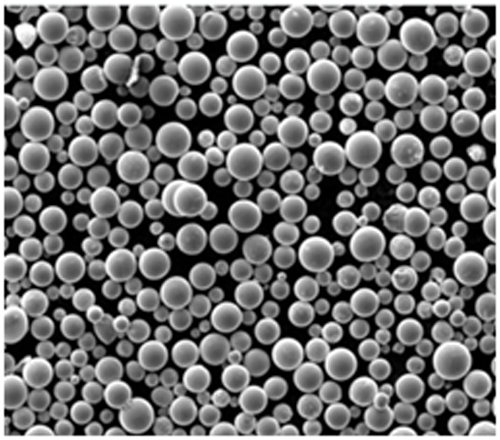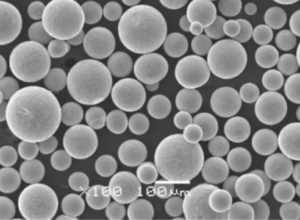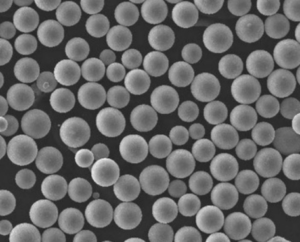ガスタービンは現代工学の驚異であり、発電からジェットエンジンまであらゆるものの動力源となっている。これらのシステムの重要なコンポーネントは 噴霧空気システム燃料を燃焼室内に細かく分散させることで、効率的な燃焼を実現する。この記事では、その複雑な仕組みについて深く掘り下げる。 ガスタービン噴霧空気システムその組成、特徴、用途、仕様などを探る。エンジニアであれ、学生であれ、あるいは単なる愛好家であれ、このガイドブックはこの魅力的なトピックに関する詳細な洞察を提供します。
ガスタービン噴霧空気システムの概要
ガスタービンの微粒化空気システムは、燃料を微粒化して液滴にすることで、燃焼プロセスを向上させるように設計されています。これにより、より効率的で完全な燃焼が保証され、性能の向上、排出ガスの低減、燃費の改善につながります。このシステムは、圧縮空気を使用して燃料を微粒子にし、燃焼室内の空気とより効果的に混合します。
噴霧空気システムの主な機能
- 燃料の燃焼を改善:燃料に微細なミストを発生させることで、より完全な燃焼を実現。
- 排出量の削減:より良い燃焼は、NOxやCOなどの汚染物質のレベルを下げる。
- 効率を高める:より完全な燃焼は、燃料からより多くのエネルギーが取り出されることを意味し、全体的な効率を向上させる。
- エンジン寿命の延長:効率的な燃焼により、エンジン部品を摩耗させるカーボンの堆積を低減。

ガスタービン噴霧空気システムの構成
霧化空気システムはいくつかの主要部品で構成され、それぞれが霧化プロセスにおいて重要な役割を果たしています。主要部品を分解してみよう:
- エアーコンプレッサー:霧化に必要な高圧空気を供給。
- 燃料ノズル:燃料と空気が混合し、霧化が起こる装置。
- エアー・マニホールド:圧縮空気を燃料ノズルに均等に分配する。
- コントロールバルブ:空気と燃料の流れを調整し、最適な混合と燃焼を実現。
コンポーネント詳細表
| コンポーネント | 説明 | 素材 | 機能 |
|---|---|---|---|
| エアーコンプレッサー | 空気を高圧に圧縮する | ステンレス鋼 | 霧化用高圧エアを供給 |
| 燃料ノズル | 空気と燃料を混合し、燃料を微粒化する。 | インコネル、チタン | 効率的な燃焼のための微細な燃料ミストを確保 |
| エアー・マニホールド | ノズルに均一にエアを供給 | アルミニウム、スチール | 均一な空気分布 |
| コントロールバルブ | 空気と燃料の流れを調整する | 真鍮、ステンレス | 最適な混合気を維持 |
の特徴 ガスタービン噴霧空気システム
噴霧空気システムの特性を理解することは、その性能を最適化する上で極めて重要である。以下はその主な特徴である:
- 圧力と流量:効果的な霧化を確実にするため、システムは高い圧力と流量で作動する。
- 素材の耐久性:極端な温度や圧力に耐えられるよう、部品は高強度材料で作られている。
- 精密制御:高度な制御システムにより、空気と燃料の混合比を高精度に調整。
性能特性表
| 特徴 | 説明 | 重要性 |
|---|---|---|
| 圧力範囲 | 通常20~100 psi | 適切な霧化を保証 |
| 流量 | エンジンサイズと設計により異なる | 燃料供給をエンジン需要に合わせる |
| 素材強度 | 高温・耐圧 | 長寿命と信頼性 |
| 制御精度 | 高い空燃比調整精度 | 燃焼効率を最適化 |
ガスタービン噴霧空気システムの用途
ガスタービンの噴霧空気システムの用途は多岐にわたり、さまざまな産業に及んでいます。ここでは、これらのシステムが一般的に使用されている場所を見てみましょう:
応用分野
| 産業 | 申し込み | メリット |
|---|---|---|
| 発電 | ガスタービン発電所 | 効率向上、低排出ガス |
| 航空 | ジェットエンジン | 燃費向上、排出ガス削減 |
| 石油・ガス | オフショアプラットフォーム、掘削リグ | 信頼できるパワー、効率的な燃焼 |
| マリン | 船舶推進システム | 燃費の向上、公害の低減 |
| インダストリアル | 熱電併給システム(CHP)、製造業 | コスト削減、エネルギー利用の改善 |
ガスタービン噴霧空気システムの仕様
ガスタービンの噴霧空気システムは、その設計と用途によって仕様が異なります。ここでは、仕様について詳しく見ていきます:
仕様表
| 仕様 | 詳細 | スタンダード |
|---|---|---|
| 動作圧力 | 20-100 psi | ASME、ISO |
| 空気流量 | さまざま(例:10~1000 CFM) | OEM規格 |
| 素材 | ステンレス鋼、インコネル、チタン | ASTM、SAE |
| 制御システム | 電子、空気圧 | IEC、ANSI |
| ノズル口径 | 0.2-1.0 mm | OEM規格 |
サプライヤーと価格詳細
の部品を調達する場合 ガスタービン噴霧空気システムサプライヤーとその価格設定を検討することは不可欠です。ここでは、いくつかの主要なサプライヤーを比較してみましょう:
サプライヤーと価格表
| サプライヤー | コンポーネント | 価格帯 | 所在地 | リードタイム |
|---|---|---|---|---|
| ABCコンプレッサー | エアーコンプレッサー | $5,000 – $20,000 | アメリカ | 4~6週間 |
| XYZノズル | 燃料ノズル | $1,000 – $5,000 | ドイツ | 6~8週間 |
| LMNマニホールド | エアー・マニホールド | $2,000 – $8,000 | 中国 | 3~5週間 |
| DEFコントロールズ | コントロールバルブ | $500 – $3,000 | 日本 | 2~4週間 |
異なるシステムの長所と短所を比較する
ガスタービンの噴霧空気システムには、それぞれ長所と短所があります。ここでは、長所と短所を理解するのに役立つ比較を示します:
利点と限界
| システム・タイプ | メリット | 制限事項 |
|---|---|---|
| 高圧システム | より良い霧化、効率的な燃焼 | より高いコスト、より複雑なメンテナンス |
| 低圧システム | よりシンプルな設計、低コスト | 霧化の効率が悪く、排出ガスが多い |
| 電子制御システム | 正確なコントロール、より良いパフォーマンス | 初期投資が高く、修理が複雑 |
| 空気圧制御システム | よりシンプルな操作、高い信頼性 | 正確な制御が難しく、効率が落ちる可能性がある |
特定の金属粉末モデル ガスタービン噴霧空気システム
金属粉末は、その高い強度と過酷な条件への耐性により、ガスタービンの噴霧空気システムのさまざまなコンポーネントによく使用されます。ここでは、具体的な10種類の金属粉末のモデルとその説明を紹介します:
金属粉モデル
- インコネル718パウダー
- 説明:高強度、耐食性ニッケルクロム合金。
- 用途:燃料ノズル、タービンブレード。
- Ti-6Al-4Vパウダー
- 説明:強度対重量比に優れたチタン合金。
- 用途:コンプレッサーブレード、ケーシング
- ステンレススチール316Lパウダー
- 説明:良好な機械的特性を持つ耐食鋼。
- 用途:エアーマニホールド、コントロールバルブ
- ハステロイXパウダー
- 説明:耐酸化性に優れたニッケル基合金。
- 用途:燃焼ライナー、タービンディスク
- コバルトクロム(CoCr)粉末
- 説明:高い耐摩耗性と耐食性。
- 用途:タービンブレード、燃焼室。
- アルミニウム7075パウダー
- 説明:高強度アルミニウム合金。
- 用途:エアーマニホールド、構造部品
- インコネル625パウダー
- 説明:耐食・耐酸化性ニッケル合金。
- 用途:排気システム、熱交換器
- ニッケル合金625パウダー
- 説明:高い強度と過酷な環境への耐性。
- 用途:燃料ノズル、タービンブレード。
- 工具鋼H13パウダー
- 説明:高い靭性と耐摩耗性。
- 用途:高温部品、ノズル
- マレージング・スチール・パウダー
- 説明:超高強度で強靭。
- 用途:構造部品、ギア
金属粉末モデルの比較
| モデル | 強さ | 耐食性 | 耐熱温度 | 用途 |
|---|---|---|---|---|
| Inconel 718 | 高い | 高い | 非常に高い | 燃料ノズル、タービンブレード |
| Ti-6Al-4V | 中程度 | 中程度 | 高い | コンプレッサーブレード、ケーシング |
| ステンレススチール316L | 中程度 | 高い | 中程度 | エアーマニホールド、コントロールバルブ |
| Hastelloy X | 高い | 非常に高い | 非常に高い | 燃焼ライナー、タービンディスク |
| CoCr | 中程度 | 非常に高い | 高い | タービンブレード、燃焼室 |
| アルミニウム 7075 | 高い | 低い | 低い | エアーマニホールド、構造部品 |
| Inconel 625 | 高い | 非常に高い | 非常に高い | 排気システム、熱交換器 |
| ニッケル合金625 | 高い | 高い | 非常に高い | 燃料ノズル、タービンブレード |
| 工具鋼 H13 | 非常に高い | 低い | 高い | 高温部品、ノズル |
| マレージング鋼 | 非常に高い | 中程度 | 中程度 | 構造部品、ギア |
よくある質問
Q1: ガスタービンにおける噴霧空気システムの主な目的は何ですか?
主な目的は、燃料を微細な液滴にすることで燃料の燃焼を改善し、空気との効率的な混合と完全燃焼を確保することである。
Q2: ガスタービンの噴霧空気システムで一般的に使用されている材料は何ですか?
一般的な材料には、ステンレス鋼、インコネル、チタン、アルミニウム、そして過酷な条件に耐えるためのさまざまな高強度合金がある。
Q3: 噴霧空気システムはどのようにして排出ガスを減らすのですか?
より完全な燃焼を保証することで、このシステムは未燃焼燃料の量を減らし、NOxやCOといった汚染物質の発生を減少させる。
Q4: 噴霧空気システムはすべてのタイプのガスタービンに使用できますか?
そうです。噴霧空気システムは汎用性があり、さまざまな産業分野のさまざまなタイプのガスタービンで使用することができます。
Q5: 噴霧空気システムの性能に影響を与える主な要因は何ですか?
主な要素には、空気圧、流量、制御システムの精度、部品に使用される材料の品質などがある。
Q6: 噴霧空気システムはどれくらいの頻度でメンテナンスを行う必要がありますか?
定期的なメンテナンスは不可欠であり、最適な性能を確保するために、通常は数ヶ月に一度、メーカーの推奨に基づいて実施する必要がある。
Q7: 高圧噴霧空気システムを設置することのコストへの影響は?
高圧システムは、その複雑さと必要とされる高品質の材料のため、一般的に高価であるが、より優れた性能と効率を提供する。
Q8:ガスタービンに噴霧空気システムを使用することによる環境面でのメリットはありますか?
そう、燃焼効率の向上は有害汚染物質の排出削減につながり、環境負荷の低減に貢献する。
Q9: 噴霧空気システム技術はどのように進歩していますか?
現在進行中の研究は、制御システムの改善、耐久性を高めるための新素材の開発、全体的な効率と排出削減の強化に重点を置いている。
Q10: 噴霧空気システムにおいて、電子制御システムは空気圧制御システムと比較してどうですか?
電子システムは、より精密な制御と優れた性能を提供するが、一般に、よりシンプルで信頼性の高い空気圧システムに比べ、より高価で複雑である。
結論
ガスタービン噴霧空気システム は、さまざまな産業用途で効率的かつクリーンな燃焼を実現するために不可欠です。その構成部品、特性、用途、使用される金属粉の違いを理解することで、これらのシステムの複雑さと重要性を理解することができる。技術の進歩に伴い、これらのシステムは進化を続け、より高い効率と環境への影響の低減を実現することでしょう。ガスタービンの設計やメンテナンスに携わっている方、あるいは単にガスタービンについて学んでいる方にも、この包括的なガイドは、噴霧空気システムの魅力的な世界についての貴重な洞察を提供します。

